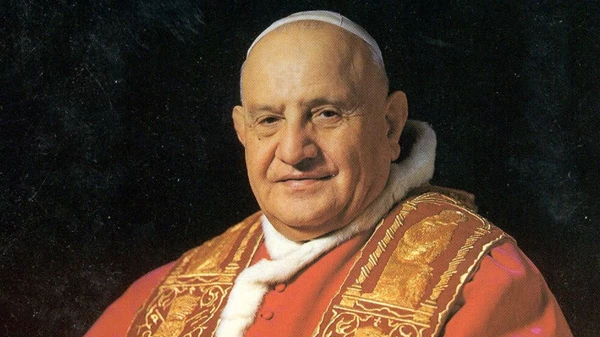Every October 11, the Church celebrates Pope Saint John XXIII, an exceptional man, one of the most important figures of the 20th century and a symbol of a Church that goes out to meet modern man to remind him that God, from eternity, continues to invite him. to share his life, to reach fullness and bear fruits of holiness.
The “Good Pope”, as John XXIII used to be called, gave the necessary impetus for the Church to renew itself and to be able to raise its voice with greater clarity in the midst of a world that is being built more and more behind God’s back.
All in all, his greatest legacy was, without a doubt, his holiness. This is how Saint John Paul II made it clear in the homily of the mass celebrated on the occasion of the transfer of his remains in 2001: “I would like to emphasize in a particular way that the most valuable gift that Pope John XXIII has left to the people of God is himself, that is, his testimony of holiness” (Solemnity of Pentecost – June 3, 2001).
Likewise, the Pilgrim Pope recalled on that occasion some words that John XXIII once pronounced, thinking of the saints and the Pontiffs buried in Saint Peter’s Basilica: “Oh, the saints, the saints of the Lord, who everywhere rejoice us , encourage us and bless us!”
Angelo Giuseppe Roncalli, Saint John XXIII, was born in Sotto il Monte, Bergamo, Lombardy (Italy) in 1881. From a very young age he was attracted to priestly service; he entered the seminary and was ordained in 1904.
During World War II, as a bishop, he helped save the lives of dozens of Jews persecuted by the Nazis, making use of the so-called “transit visa” of the Apostolic Delegation under his jurisdiction.
In 1953 he was created Cardinal and on the death of Pius XII, in 1958, he was elected Supreme Pontiff by the College of Cardinals. Over time, he earned the nickname “Papa Bueno”, thanks to his evident human qualities: he had a great sense of humor and a very unique gift with people. He was helped by his good-natured appearance and his perennial smile, characteristics that hinted at a soul desirous of Christ.
The whole world – in a convulsed time – became witness to the Pope’s effort to inspire authentic peace and trust. They were days of tensions at all levels. While some world leaders called for confrontation, violence and war, John XXIII sent totally opposite signals: the people saw in him the humble, attentive, simple shepherd, and, at the same time, determined, courageous, active.
While the countercultural and ideological movements raised the flags of the subversion of traditional values and principles, Saint John XXIII also made a powerful call for change, but without ignoring the richness of the human, condensed in the Christian tradition.
The Church, thanks to his teaching, became a voice that was heard, a beacon that illuminated the new darkness that was appearing and that still casts a shadow over life in society.
John XXIII also marked the course that subsequent pontiffs would follow: dialogue with secular culture, ecumenism and the search for peace. As part of that pontifical magisterium are the famous encyclicals “Pacem in terris” (on peace among peoples) and “Mater et magistra” (on the issue of workers).
The Second Vatican Council
In this magisterial and missionary framework, of a Church open to the world to redeem it in Christ, Saint John XXIII wanted to call a council. His intention was to put the Church in tune with the new times in total fidelity to the Gospel, but renewed in his proposal.
Thus, Pope Roncalli convened the Second Vatican Council, inaugurated on October 11, 1962. This was unquestionably the greatest event of the Church during the 20th century, whose projection extends into the new millennium.
Over the years, Catholics become increasingly aware of the timeliness of the council, of the “Aggiornamento” (updating) that the Spirit demanded to strengthen the Church founded by Jesus Christ and enhance its evangelizing mission.
Saint John XXIII was called to the Father’s House on June 3, 1963. Saint John Paul II – heir and protector of the wealth of the Council – beatified him in 2000 and Pope Francis canonized him on April 27, 2014.



